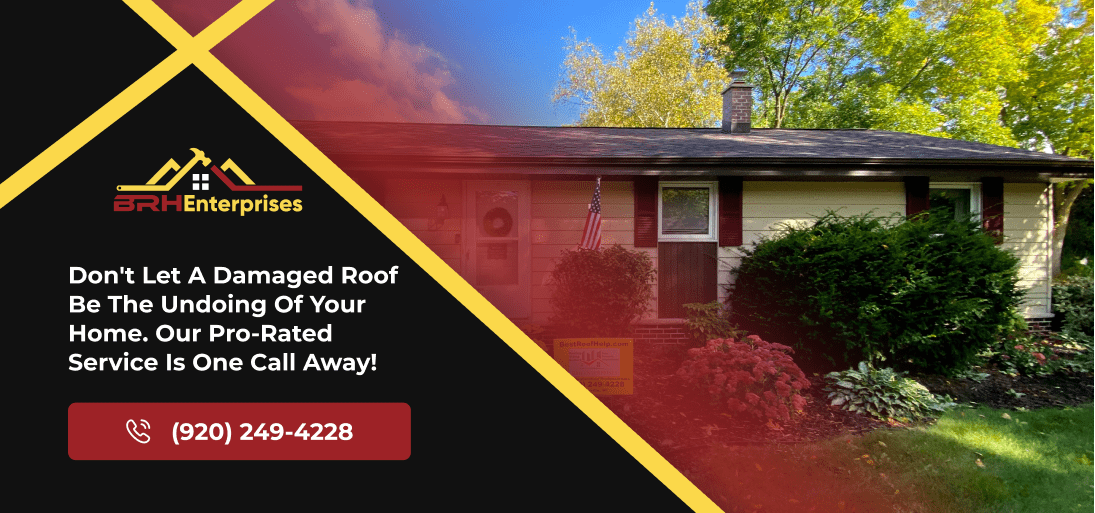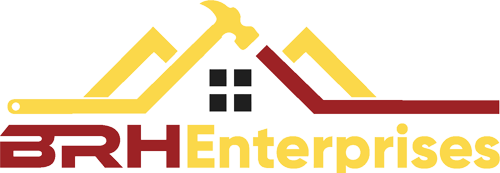How to Repair Common Roofing Problems in Wisconsin: DIY Guide
Estimated Reading Time : 6 Min.

Wisconsin homeowners face unique roofing challenges due to the state’s extreme weather. Winter brings heavy snow and ice, while summer has consistently sunny days and thunderstorms. Understanding how to identify and repair common roofing problems can save you thousands in potential water damage and extend your roof’s lifespan by years.
The harsh Wisconsin climate takes a particular toll on roofing materials. Asphalt shingles can crack under temperature fluctuations, while metal roofs might develop loose fasteners during windstorms. Wood shakes, though beautiful, require special attention to prevent moisture damage during our humid summers. Recognizing these vulnerabilities is the first step toward effective repairs.
Taking care of roof damage immediately is crucial, especially after storms or extreme weather events. A small leak can lead to structural issues if left unattended. Whether you’re dealing with missing shingles after high winds, water intrusion from ice dams, or emergency repairs during storms, having the right knowledge and tools makes all the difference.
Southern Wisconsin residents need specific repair techniques that account for our regional weather patterns. This guide covers the most common roofing problems for Wisconsin homes and provides practical solutions that even novice DIYers can implement for minor issues, while also helping you recognize when professional assistance is necessary.
Effective Solutions for Roof Leaks in Wisconsin Homes
When Wisconsin’s unpredictable weather strikes, roof leaks can quickly develop and threaten your home’s integrity. Identifying the source of a leak early is crucial for preventing extensive damage. Look for water stains on ceilings, damp insulation in the attic, or mold growth along interior walls. Outside, inspect for missing or damaged shingles, cracked flashing around chimneys and vents, or visible gaps in your roofing materials.
For DIY-savvy homeowners, several common leak sources can be addressed without professional help. Damaged shingles can be replaced by carefully lifting the row above, removing the damaged piece, sliding in a new shingle, and securing it with nails and roofing cement. Flashing issues often involve resealing with quality roofing cement or replacing corroded metal flashing. For vent seal failures, remove the old rubber gasket and install a new one, securing it with waterproof sealant designed for Wisconsin’s temperature extremes.
Wind damage is particularly common in southern Wisconsin, where gusts can lift and curl shingles. After storms, examine your roof for loose materials and secure them promptly. Remember that winter brings its own challenges. Ice dams form when heat escapes through poorly insulated attics, causing snow to melt and refreeze at the roof edges. Proper attic ventilation and insulation are your best defense against this persistent Wisconsin roofing problem.
Conquering Ice Dams: Prevention and Repair Strategies
Ice dams represent one of Wisconsin’s most destructive winter roofing challenges. These frozen barriers form when heat escapes through the attic, melting snow on the upper roof areas. As this water flows down to the colder roof edge, it refreezes, creating a dam that traps melting water behind it. This trapped water eventually seeps under shingles, seeping into your home and causing significant damage to walls, insulation, ceilings, and even electrical systems.
During winter, safe immediate remedies include using a roof rake to carefully remove snow buildup without damaging shingles and creating channels through the dam to allow water drainage. Calcium chloride ice melt products can help, but avoid rock salt, which damages roofing materials. For extensive ice dams, calling a professional roofing contractor is typically the safest option to prevent further damage to your Wisconsin home.
Long-term prevention strategies focus on addressing the root causes. Improving attic insulation helps prevent heat transfer that melts roof snow. Ventilation is equally critical — soffit, ridge, and gable vents create airflow that maintains a consistent roof temperature. Air sealing ceiling penetrations prevents warm air from escaping into the attic. Some homeowners benefit from installing heat cables along roof edges as an additional defense, though these require professional installation to ensure safety and effectiveness.
Repairing Wind-Damaged Roofs After Wisconsin Storms
Wisconsin’s powerful storms can wreak havoc on residential roofs, with high winds causing damage ranging from a few missing shingles to extensive structural issues. After any major storm, safely assess your roof from the ground using binoculars. Look for obvious signs of wind damage, including missing or lifted shingles, dented metal flashing, or debris impact marks. Check your yard for fallen shingle pieces, which often indicate roof damage even when it’s not visible from below.
If you spot concerning damage, consider whether it’s a DIY fix or requires professional help. Generally, if fewer than 10 shingles are damaged and the underlying roof deck appears intact, a handy homeowner might tackle the repair. However, if you notice sagging sections, water stains on your ceiling, multiple damaged areas, or if your roof is over 15 years old, it’s time to call a professional Wisconsin roofing contractor.
For emergency protection when waiting for the professionals to arrive, heavy-duty tarps secured with lumber, not nails directly into the roof, can temporarily cover damaged areas. Remove any debris safely from the roof to prevent further damage. Inside, place buckets under active leaks and move valuables away from compromised areas. Document all damage with photos for insurance purposes before making any temporary repairs.
DIY Shingle Replacement After Storm Damage: Restoring Your Roof
Wisconsin’s severe weather events often leave homeowners facing damaged or missing shingles. While extensive roof damage requires professional attention, replacing a few damaged shingles is a manageable DIY project that can prevent water intrusion and more repairs down the road. With the right tools and techniques, you can restore your roof and extend its lifespan.
For a successful shingle replacement project, you’ll need a pry bar, roofing nails, hammer or nail gun, utility knife, roofing cement, and replacement shingles that match your existing roof. For Wisconsin homes, choose high-wind-rated shingles and impact-resistant options that withstand our hailstorms. Always purchase extra shingles to account for mistakes and future repairs. Safety equipment is non-negotiable — invest in a sturdy ladder with stabilizers, non-slip footwear, a safety harness, and gloves.
Begin the replacement process by carefully lifting the shingles above the damaged one using your pry bar and removing the nails. Slide out the damaged shingle, then insert the new one in the same position. Add the recommended amount of roofing nails, usually four or six per shingle, then cover the nail heads with roofing cement. Press down on the replacement shingle firmly to activate the adhesive strip. For Wisconsin’s climate, apply additional roofing cement beneath the shingle tabs for extra wind resistance, which helps prevent future storm damage.
When to Call the Professionals: Serious Roofing Issues
While many Wisconsin homeowners can handle minor roofing repairs, certain situations need a professional eye. Structural damage signs include sagging roof sections, multiple leaks occurring simultaneously, or ceiling beams that appear wet or deteriorated. After severe weather events like Wisconsin’s notorious blizzards or thunderstorms, watch for large amounts of granules in your gutters, shingles that have curled extensively, or visible daylight coming through your roof boards when inspecting from inside your attic.
Interior warning signs shouldn’t be ignored either. Water stains that spread quickly across ceilings, mold growth that returns despite cleaning, or a sudden increase in energy bills may indicate significant roof damage requiring a professional assessment. If your roof is over 15 to 20 years old and experiencing multiple issues, repairs may no longer be cost-effective compared to a complete replacement.
When selecting a qualified Wisconsin roofing contractor, verify they hold a state license and insurance coverage, including workers’ compensation and liability insurance. Ask for local references specifically from projects completed in Southern Wisconsin, where they’ve faced similar weather patterns. Request detailed written estimates that include material specifications, project timelines, and warranty information. Experienced contractors should offer comprehensive solutions that address not just the visible damage but also underlying issues like ventilation improvements to prevent ice dams or wind-resistant installation techniques. Prioritize contractors who understand Wisconsin’s unique climate challenges and offer solutions tailored to our region’s specific needs.
Seasonal Maintenance Calendar for Wisconsin Roofs
Successfully maintaining your Wisconsin roof requires anticipating our state’s four seasons. By following a dedicated maintenance calendar, homeowners can significantly extend their roof’s lifespan while avoiding emergency repairs. The key is consistency: fix small issues before major damage compromises your home’s structural integrity.
Before winter arrives, complete critical preventive maintenance tasks like cleaning all gutters and downspouts thoroughly to ensure proper drainage when snow begins to melt. Check and seal any gaps in your attic insulation to prevent heat loss that contributes to ice dam formation. Trim overhanging branches that could break under snow weight and damage your roofing materials. Installing heat cables along roof edges and in gutters can provide additional protection against ice dams in particularly vulnerable areas of southern Wisconsin homes.
Spring and fall are the ideal times for a roof inspection. During spring, examine your roof for winter damage, including loose or missing shingles, damaged flashing, and seal failures around vents or chimneys. Fall inspections should focus on clearing debris, checking for summer storm damage, and ensuring all drainage systems function properly before winter arrives. Professional roof inspections during these transitional seasons can identify subtle problems invisible to untrained eyes, potentially saving thousands in future repair costs and extending your Wisconsin roof’s service life by years.
Expert Roof Repair Solutions by BRH Enterprises LLC
Dealing with roofing issues in Wisconsin’s unpredictable weather can be a daunting task. Whether it’s repairing damage from ice dams, fixing leaks, or replacing shingles after a storm, it’s crucial to address these problems quickly to prevent further damage to your home. If you’re unsure about handling these repairs on your own or if the damage seems extensive, it’s wise to call in the professionals.
BRH Enterprises LLC specializes in diagnosing and fixing common roofing problems across Wisconsin. We understand the challenges posed by local weather conditions and offer durable solutions. For expert advice and top-notch roof repair services, call BRH Enterprises LLC today at (920) 249-4228 and ensure your home is safe and secure.


